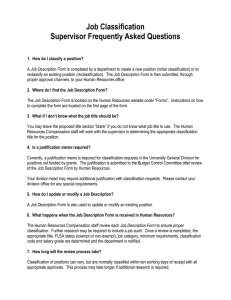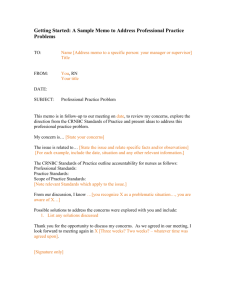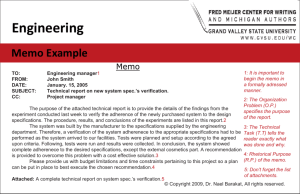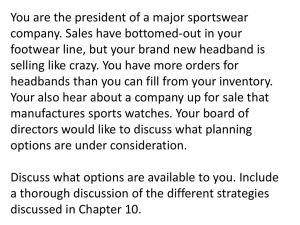MS PowerPoint Presentation
advertisement
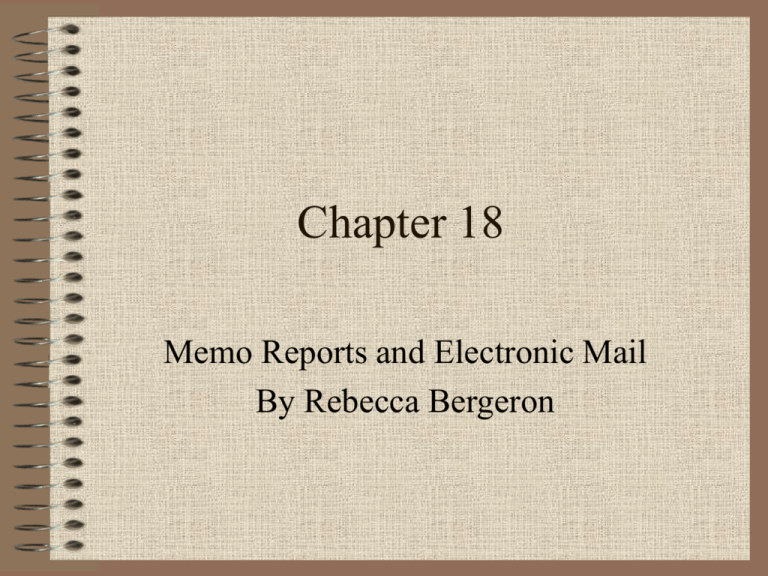
Chapter 18 Memo Reports and Electronic Mail By Rebecca Bergeron Purpose of Memo Reports • To present ideas and facts to decision makers. • A major form of internal written communication. • Leaves a paper trail for future reference to trace decisions, progress, etc. Elements of A Usable Memo • Heading – – – – – Identifies the sender Recipient Subject Date (Order of these items may differ.) • * See Figure 18.1 on page 346 in the textbook. Interpersonal Considerations In Writing A Memo • A form of “in-house” correspondence circulated among colleagues, subordinates, and superiors. • Topics include evaluations, recommendations about policies, procedures. • What are we doing wrong, and how can we improve? • People are sensitive to criticism so be careful about what you write in your memo. • Common mistakes that can offend coworkers. – – – – Griping or complaining. Being too critical or judgmental. Being too bossy. Neglecting to provide a copy to each person involved. Common Types Of Memo Reports • • • • • • Recommendation Justification Progress Periodic Survey Minutes of Meetings Recommendation • • • • Interprets data. Draws conclusions. Makes recommendations. They are mostly written specifically for a request. Justification • A type of recommendation report, but is often initiated by the writer rather than as a request from the recipient(s). • Instead of ending with a request or recommendation, the Justification Memo asks a question. For example: Why should we? Organizing A Justification Report • State the problem and how you would solve the problem. • Point out specific things like cost, savings, and the benefits of your idea. • Explain how your idea can be put into action. • Conclude by encouraging the reader to act. • Example on page 350 in the book. Progress Reports • Tracks activities, problems, and progress. • Good to do daily. • It can be part of a series. For example: you may have to do a proposal, then the progress report and finally the final report. • The progress report will help provide a record and history of the project. Types Of Progress Reports ON THE JOB • Summarize the work that has been completed to date. • The details for the types of training anticipated. • Where you are meeting. • The work that still needs to be finished. AT SCHOOL • Summarize the project. • Write down the work that has been completed and the date that it was completed on. • Work in progress. • Work to be completed and by what dates. • Any complications that you had or think you might have. Periodic Activity Report • Resembles the progress report. • Unlike the progress report, it summarizes specific accomplishments and the general activities on a given project. • An example of a periodic activity report is on page 354 of the book. Survey Report • Write the purpose of the report. • Present data in tabular form for easy comparison. • Name sources. • Discuss conclusions. • Example on page 355 of the book. Minutes Of Meetings • Record who attended the meeting. • Record the agenda of the meeting. – Date, time, and place. – It summarizes what was discussed. • If there was a vote, record what it was and its outcome. • Record when the meeting ended. Electronic Mail (E-Mail) • Using email is how many businesses send and receive messages. Benefits and Issues Of E-Mail Benefits • Email is fast, convenient, efficient, and relatively nonintrusive. • It has no special design, so it allows for the readers to focus more on the message. • It allows for workers to keep in touch on a project quickly by sending and receiving questions. Issues • Gossip, personal messages, and complaints may be seen by unintended recipients. • There is a lot of junk mail. • Some messages are poorly edited and long-winded. • Messages may offend others.

